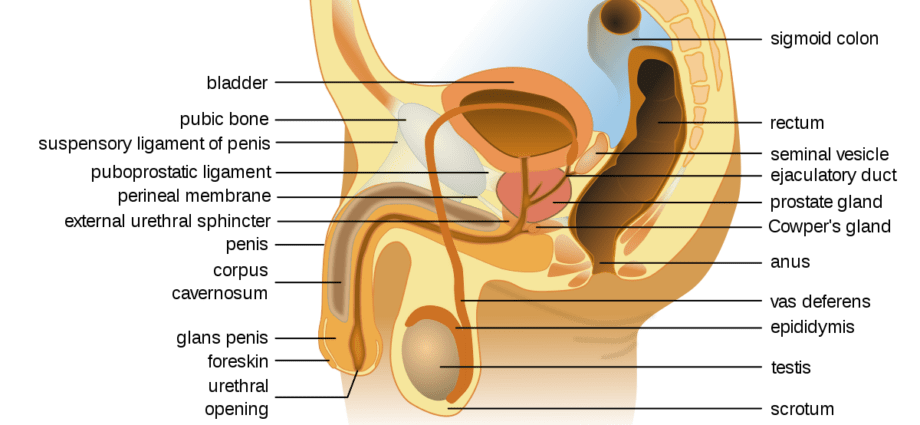Contents
Seminal Vesicle
The seminal vesicle, or seminal gland, is a structure in the male reproductive system involved in the formation of sperm.
Position and structure of the seminal vesicle
Position. Two in number, the seminal vesicles are located at the back of the bladder and in front of the rectum (1). They are also directly connected to the prostate, which is located below the prostate (2).
Structure. About 4 to 6 cm long, the seminal vesicle is made up of a long, narrow duct coiled on itself. It comes in the shape of an inverted pear and has a bumpy surface. It runs along the end of the vas deferens from the testes. The union of each seminal vesicle with the corresponding vas deferens allows the formation of the ejaculatory ducts (3).
Function of the seminal vesicle
Role in the production of sperm. Seminal vesicles are involved in the production of seminal fluid (1). This fluid is the major component of semen and contains the elements necessary to nourish and transport sperm during ejaculation. In particular, it allows the proper delivery of spermatozoa to the oocyte.
Storage role. Seminal vesicles are used to store semen between each ejaculation (3).
Seminal vesicle pathologies
Infectious pathologies. The seminal vesicles can undergo infections grouped under the term spermato-cystitis. They are often associated with infection of the prostate, prostatitis, or epididymis, epididymitis (4).
Tumor pathologies. Tumors, benign or malignant, can develop in the seminal vesicles (4). This tumor development may be linked to the development of cancer in neighboring organs:
- Prostate cancer. Benign (non-cancerous) or malignant (cancerous) tumors can develop in the prostate and affect adjacent tissues, including the seminal vesicles. (2)
- Bladder cancer. This type of cancer is usually caused by the development of malignant tumors in the inner wall of the bladder. (5) In some cases, these tumors can grow and affect surrounding tissues, including the seminal vesicles.
Malformations of the seminal vesicles. In some people, the seminal vesicles may be abnormal, including being small, atrophic, or absent (4).
Treatments
Medical treatment. Depending on the pathology diagnosed, different drugs may be prescribed such as antibiotics.
Surgical treatment. Depending on the pathology diagnosed and its evolution, a surgical operation may be carried out. In the case of prostate cancer, an ablation of the prostate, called prostatectomy, or an ablation of the seminal vesicles can in particular be carried out.
Chemotherapy, radiotherapy, hormone therapy, targeted therapy. Depending on the type and stage of the tumor, chemotherapy, radiation therapy, hormone therapy or targeted therapy may be used to destroy cancer cells.
Seminal vesicle examination
Proctological examination. A digital rectal exam may be done to examine the seminal vesicles.
Medical imaging exam. At the level of the protast, various examinations can be performed such as an abdomino-pelvic MRI, or an ultrasound. Ultrasound of the prostate can be performed by two different methods, either externally suprapubic or internally endorectally.
Prostate biopsy. This examination consists of a sample of cells from the prostate and makes it possible in particular to diagnose the presence of tumor cells.
Additional tests. Additional examinations such as urine or semen analyzes may be performed.
Symbolic
Seminal vesicles are strongly associated with fertility in humans. Indeed, certain pathologies at the level of the seminal vesicles can lead to fertility problems.










